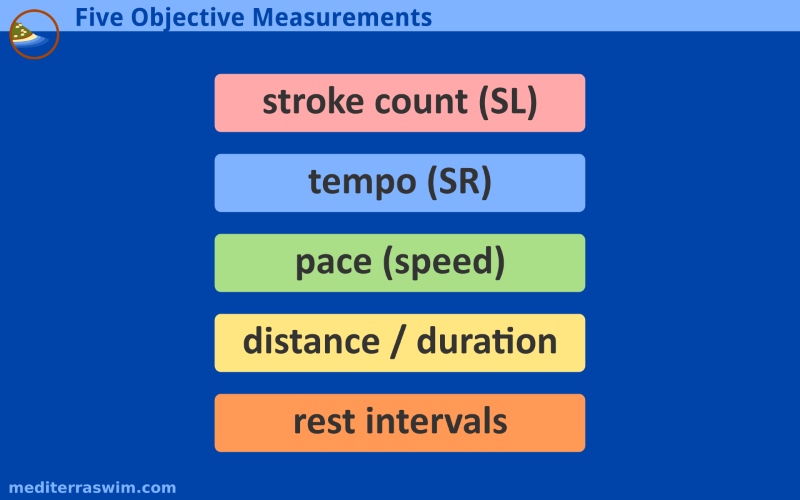There are five basic objective training metrics we use in our training to design practices and measure progress.

These metrics can be combined and adjusted in an infinite variety of ways to create a totally personalized practice set, with the perfect amount of challenge for any human swimmer – beginners to the world-record holders.
Stroke Length
Stroke Count refers to the number of strokes (strokes per length, or SPL) it takes the swimmer to cross the pool, accounting for the push-off and glide until that first stroke. For mathematical purposes, stroke Length (SL) is the inverse of SPL.
Tempo
Tempo refers to the number of seconds taken for each arm stroke (at any consistent point in the stroke cycle). Some prefer to measure in terms of strokes per minute (SPM), otherwise known as stroke rate. Stroke rate is the mathematical inverse of tempo.
Time or Pace
Pace refers to the amount of time (in minutes or seconds) it takes to swim a certain distance. We tend to be most familiar with a swimmer’s pace per 100 meters, or per 25 meters. Speed (i.e. velocity) is the mathematical inverse of Pace. We prefer to use the term Pace because it is a much more common reference point among swimmers.
Distance or Duration
Distance refers to the distance a swimmer can or will cover in a continuous swim (without rest intervals). Similarly, duration refers to the amount of time a swimmer can or will swim continuously, without rest.
Rest Intervals
Rest refers to the amount of time a swimmer will take to either stop moving during a swim, or slow down into a more restful pace or activity (like doing a drill). Rest is both to give the energy system time to recover strength and give the brain time to recover attention.

